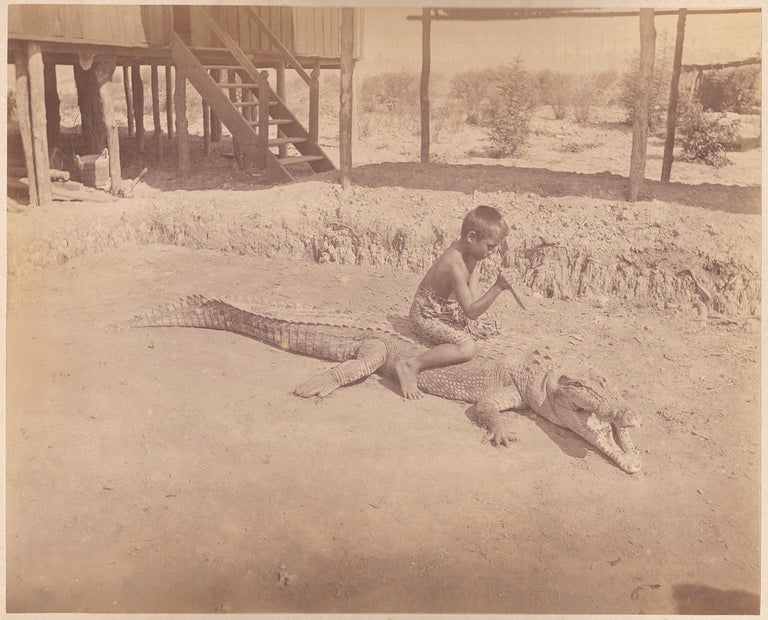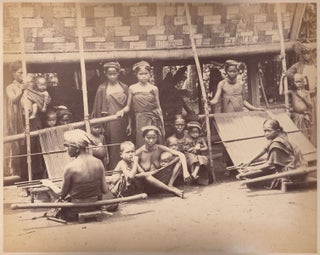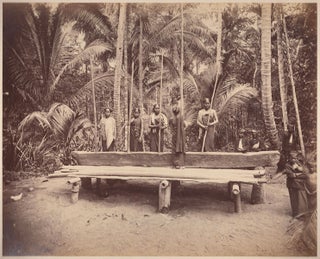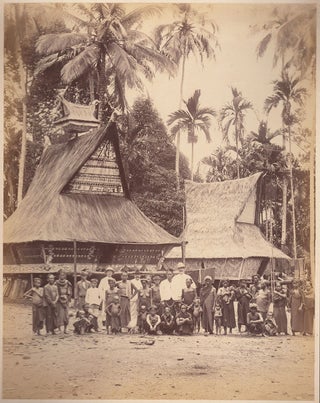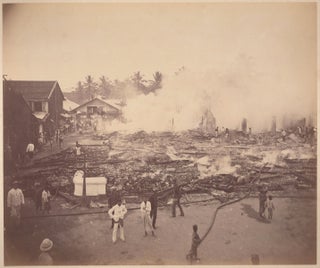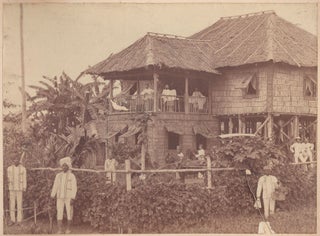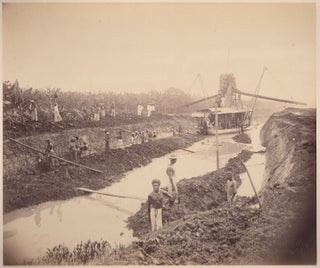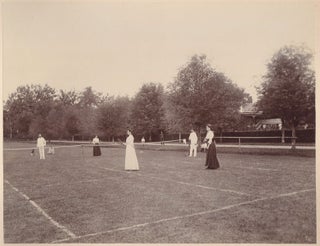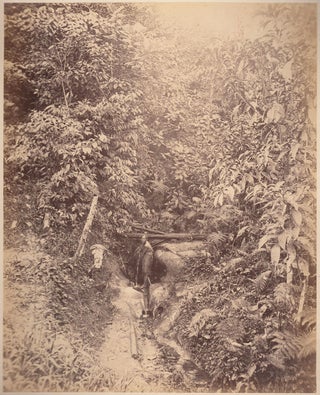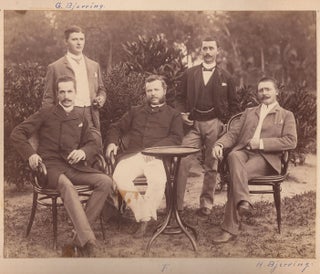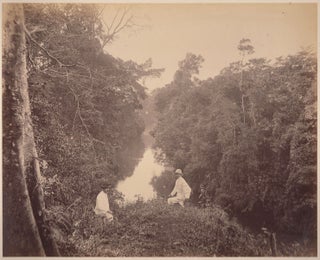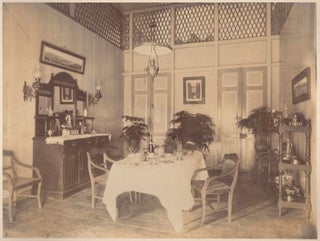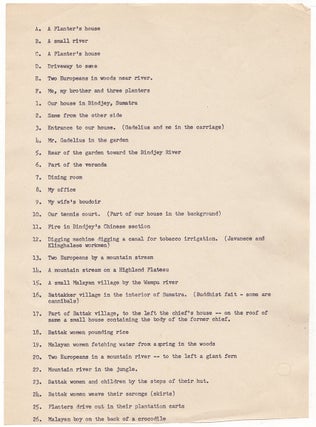Bindjey, Sumatra, Dutch East Indies Photo Album. [Indonesia]: [ca. 1890–1920’s]. Oblong 4to photo album, leather spine, lacking covers, a.e.g. 32 bromide prints, 206 x 276 mm, 16 unsigned, 15 with photographer’s stamp in image. Three typescript lists of the photos included, lettered or numbered, a–f, 1–26. A fascinating, vivid, and rare photo album documenting the operations of a tobacco plantation in the Dutch East Indies, capturing scenes of native laborers at work, the colonized native villages and their inhabitants, the Dutch transplants, and various scenes from the Indonesian rainforests. The territorial and colonial reach of the Dutch Empire attained its apogee in the early twentieth century, which this attractive photo album is roughly contemporaneous with. The Dutch East Indies colony—consisting of what is present-day Indonesia—was one of the most profitable European colonies under the Dutch Empire’s rule and contributed to their global eminence in the spice and cash-crop trade. The Dutch East India Company would introduce numerous non-native cash crops into the colony such as coffee, tea, cacao, rubber, sugar, opium, and—as seen in this album—tobacco. Within the colony, the social fabric was rigidly segregated along the color line—the Dutch elites living aloof and separate, yet all the while bound to their indigenous subjects.
A group of photos included in this album consists of scenes of a Dutch tobacco plantation where native people are shown laboring and gazing into the camera—often looking visibly displeased or distraught—while the Dutch tend to be luxuriating or are conspicuously posing for the camera. In all the photos, the Dutch are dressed head-to-toe in white, obviously to ward of the heat, but nevertheless accentuating their dissociation from the native peoples. Accompanying the album are three indexes to the photos, one in English and two in Dutch, identifying the subjects of all the photographs. One photo pictures five of the Dutch plantation owners and planters, two of whom are smoking cigars, identified on the index sheet as “me, my brother and three planters”; inscriptions identify the brothers are H. and G. Bjerring., ome of whom was presumably the owner of the album.
Numerous shots center on an indigenous Battackker village located in the interior of Sumatra and capture Battack women performing various forms of domestic labor, such as weaving sarongs (skirts), pounding rice, tending to their children, and so on. One beautiful photo captures a Malayan woman fetching water from a spring in the forest. Several photos feature the plantation owners amongst the Battackker village dwellers at the steps of a hut; in these photos, the presence of the Dutch of the Dutch as overlords is palpable. In one of these, the Battack and the colonizers stand before a building whose roof—the list relates—“contained the body of the former Battack chief.” The description for another of these shots reads: “Buddhist fait—some are cannibals.”
One striking photo—taken from an elevated vantage point—captures the aftermath of a ravaging fire that destroyed a large building in Bindjey's Chinese section; men are shown picking through the rubble amid large clouds of smoke. One of the most interesting photos shows a “digging machine” and a group of “Javanece” and Klinghalese laborers digging a canal for tobacco irrigation; two native workers stare into the camera with apparent consternation. Various bourgeois interiors of the plantation house in Bindjey, Sumatra, are represented, as well as a tennis court where Dutch women are shown playing doubles. One bemusing if startling photo captures a young Malayan boy sitting on the back of a crocodile with a knife pointed ready to strike, the crocodile’s jaws wide open.
The Netherlands would only come to recognize Indonesian sovereignty at the 1949 Dutch–Indonesian Round Table Conference, with the exception, however, of the Netherlands New Guinea (Western New Guinea), which was only later ceded.
A captivating photo album documenting a colonial tobacco plantation in the Dutch East Indies and its indigenous subjects.
CONDITION: Lacking covers, spine worn, one photo with crack through upper left corner of image, another with tear into lower right corner of image, a few photos with areas of discoloration, images generally good.
Item #4490
Sold


